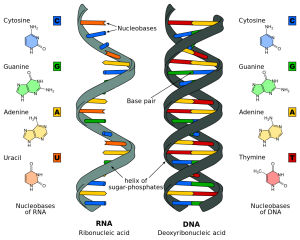(This is a blog post by Cinta Gomez-Silvan, the first author on this paper)

Story behind the paper: A comparison of methods used to unveil the genetic and metabolic pool in the built environment.
It seems pretty obvious that in the field of microbial ecology we need to understand how living microorganism interact. Nevertheless, their differentiation from the dead or even nonexistent ones in certain environment is not as straightforward as we may imagine (Emerson et al., 2017). The most natural and direct approach to distinguish viable from inactive cells is to compare the 16S ribosomal RNA (rRNA) molecule with the DNA from the 16S rRNA gene, but the same labile nature that reduces the concentration of RNA once the microbes are either inactive or dead could be also a curse, making it harder to work with. In my experience, it’s just a matter of adjusting working routines in the lab, but I wasn’t that lucky convincing other people about that. So, when I proposed to develop an efficient method to extract RNA from built environment (BE) samples, I was excited. There it was, a great opportunity to write down my experience as numbers, and show the RNA is not as ungrateful as it is said.
Besides the obvious objectives of the project, of getting rRNA from BE real samples, I wanted to test every parameter in the sample flow: sampling methods, sampling techniques, preservation, extractions, type of surfaces, air filters, how the cell numbers correlate with the RNA? How the rRNA/rRNA gene (DNA) ratio correlated with other live/dead techniques? … Too many things to test, so we narrowed them down to most relevant to our project, but still the numbers were overwhelming. I needed to train two research assistants over the course of this project in the methods that we would be using, one of them without any previous experience in a wet lab. By the end of the in-vitro testing, we ran over 300 qPCR and RT-qPCR in less than a year under strict controls. Seeing a brand new assistant being able to work with RNA in an efficient and accurate manner after just few months, certainly reinforced my assertion about the properness of the lab working routines. But the biggest reinforcement came when we were not only able to obtain rRNA from the real BE samples, but we got highest concentrations of rRNA than DNA, even from the air samples.
The community analysis of the rRNA vs. DNA showed that even though the microbial populations in the BE are dominated by environmental microorganisms, it’s the ones coming from the human hosts which remains viable. The higher viability of rare taxa has been observed also in other types of environment, but, in the case of BE, could have potential health implications if the sub-set of human pathogens shows similar trends.
But I realized that there was more to this study than the results we obtained from our comparison of RNA methods. What was more surprising, at least for me, was how quickly the DNA degraded during the storage of the sample. The DNA is typically considered a stable molecule, and it maybe true when is pure, but under the presence of cells and enzymes its degradation may have been overlooked. These findings make me wonder how other community studies have been affected by their sample storage. If nothing else, I believe that this study demonstrated that it is imperative for you to extract the nucleic acids from your samples as quickly as you can, if you don’t want to significantly alter your interpretation of the microbial community composition.
Another little surprise, the amazing performance of the RNAStable in preserving the extracted RNA for over 3 months with no significant degradation and with no need to freeze the extracted material. We didn’t test the DNAStable reagent, but independent studies have showed similar results. These products offer an easy to use and cheaper option for long term DNA and RNA sample storage and shipping after the nucleic acid extraction process, avoiding the necessity of cooling systems.
Reference:
Emerson JB, Adams RI, Román CMB, Brooks B, Coil DA, Dahlhausen K, et al. Schrödinger’s microbes: tools for distinguishing the living from the dead in microbial ecosystems. Microbiome. 2017;5:86.
